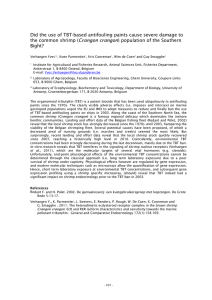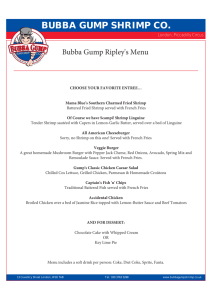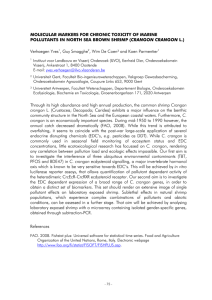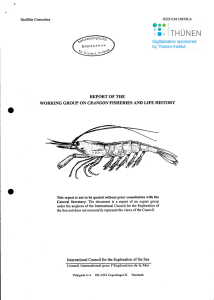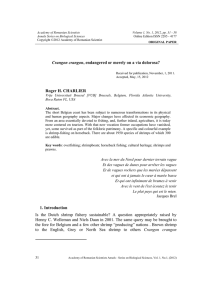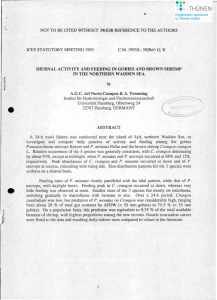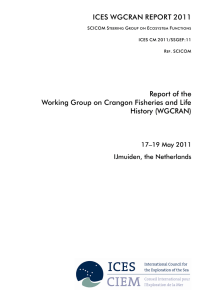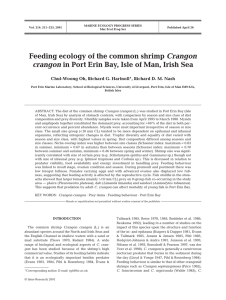Crangon crangon vessels
advertisement
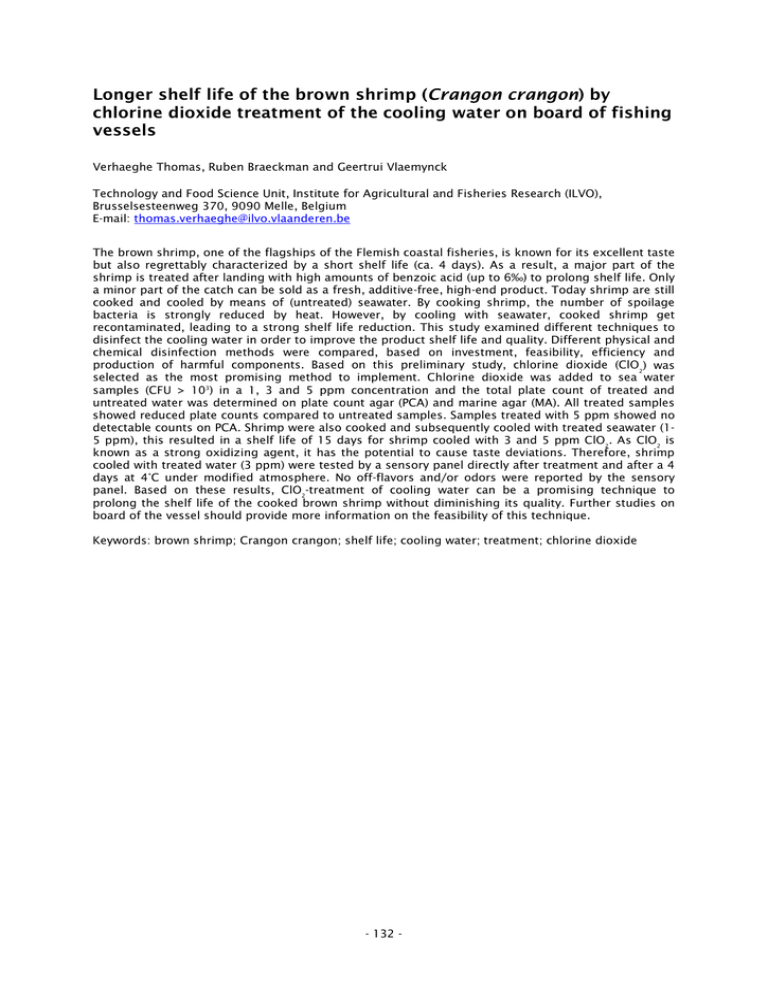
Longer shelf life of the brown shrimp (Crangon crangon) by chlorine dioxide treatment of the cooling water on board of fishing vessels Verhaeghe Thomas, Ruben Braeckman and Geertrui Vlaemynck Technology and Food Science Unit, Institute for Agricultural and Fisheries Research (ILVO), Brusselsesteenweg 370, 9090 Melle, Belgium E-mail: thomas.verhaeghe@ilvo.vlaanderen.be The brown shrimp, one of the flagships of the Flemish coastal fisheries, is known for its excellent taste but also regrettably characterized by a short shelf life (ca. 4 days). As a result, a major part of the shrimp is treated after landing with high amounts of benzoic acid (up to 6‰) to prolong shelf life. Only a minor part of the catch can be sold as a fresh, additive-free, high-end product. Today shrimp are still cooked and cooled by means of (untreated) seawater. By cooking shrimp, the number of spoilage bacteria is strongly reduced by heat. However, by cooling with seawater, cooked shrimp get recontaminated, leading to a strong shelf life reduction. This study examined different techniques to disinfect the cooling water in order to improve the product shelf life and quality. Different physical and chemical disinfection methods were compared, based on investment, feasibility, efficiency and production of harmful components. Based on this preliminary study, chlorine dioxide (ClO2) was selected as the most promising method to implement. Chlorine dioxide was added to sea water samples (CFU > 103) in a 1, 3 and 5 ppm concentration and the total plate count of treated and untreated water was determined on plate count agar (PCA) and marine agar (MA). All treated samples showed reduced plate counts compared to untreated samples. Samples treated with 5 ppm showed no detectable counts on PCA. Shrimp were also cooked and subsequently cooled with treated seawater (15 ppm), this resulted in a shelf life of 15 days for shrimp cooled with 3 and 5 ppm ClO2. As ClO2 is known as a strong oxidizing agent, it has the potential to cause taste deviations. Therefore, shrimp cooled with treated water (3 ppm) were tested by a sensory panel directly after treatment and after a 4 days at 4°C under modified atmosphere. No off-flavors and/or odors were reported by the sensory panel. Based on these results, ClO2-treatment of cooling water can be a promising technique to prolong the shelf life of the cooked brown shrimp without diminishing its quality. Further studies on board of the vessel should provide more information on the feasibility of this technique. Keywords: brown shrimp; Crangon crangon; shelf life; cooling water; treatment; chlorine dioxide - 132 -




